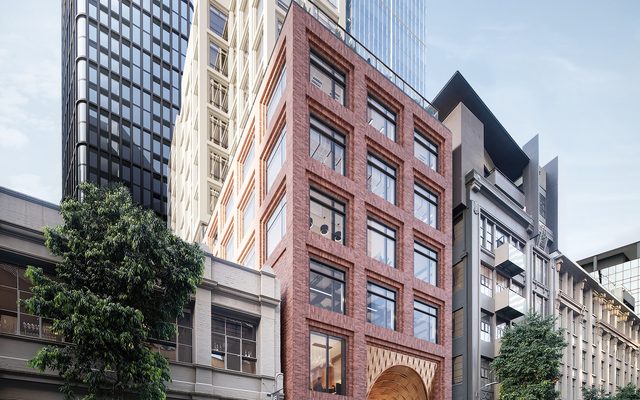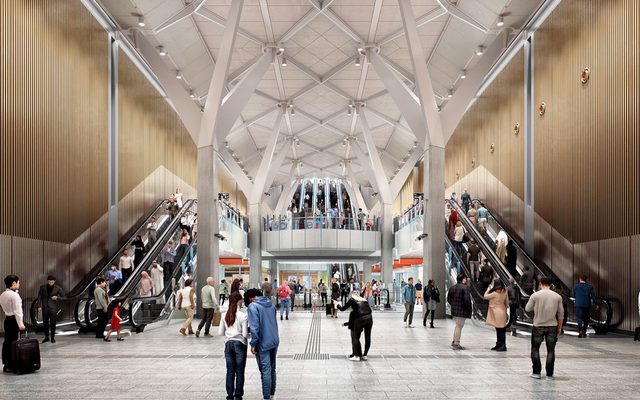This article is from the Australian Property Journal archive
MELBOURNE CBD’s office vacancy hit its highest level since the turn of the millennium as repeated lockdowns forced demand to its lowest level on record, eclipsing the 1990s recession.
The Property Council of Australia’s Office Market Report for the six months to July saw vacancies lift 2% to 10.4% over the period – the highest the city has recorded since January 2000.
The increase in vacancy was largely due to reduced demand, with tenants handing back space contributing to a net absorption of 96,635 sqm of used office space in the CBD. Melbourne was the only CBD in Australia to experience negative demand over the last six months. Demand is now at its lowest level on record, surpassing previous the lowest in July 1996.
“Every lockdown is a step backwards for Melbourne and particularly our CBD and there is residual uncertainty about the future with more supply coming online over the next six months,” Victorian executive director of the Property Council, Danni Hunter said.
The CBD saw negative net supply with 13,219 sqm of supply additions over the period and 13,450 sqm of withdrawals, in stark contrast to 2020 which saw more than 350,000 sqm of office space added to the market.
However, the CBD will face another test with Melbourne set to deliver over half of new office space in Australia over the next six months. Some 222,000 sqm of new stock will enter the market in the second half of 2021, while JLL’s James Palmer, joint head of office leasing said that across all three of Melbourne’s markets there are 14 office developments currently under construction, they are expected to complete over the remainder of this year, totalling 277,850 sqm.
“These projects have achieved a combined pre-commitment rate of 50%, which will continue to create new opportunities for occupiers, be that in new stock, backfill or sub-lease space.”
Australia Post became one of the first multibillion corporations to move out of the CBD post-COVID in favour of the city fringe, agreeing to anchor a new $130 million Charter Hall office complex in Richmond with 34,000 sqm.
Negative demand was concentrated in A grade office segment, with a negative net absorption of 84,540 sqm over the six months period, leaving Melbourne with more negative demand for prime stock than secondary stock. Every other capital city recorded higher vacancy in secondary over prime stock.
Ashley Buller, CBRE’s head of office leasing, Victoria said the number of enquiries against the first half of 2020 had increased by 40%, with 74% of that from tenants seeking less than 1,000 sqm.
Dexus announced 11 new leasing deals across 4,327 sqm at 360 Collins Street, taking the tower to 99% occupied. New tenants include PAC Partners, ALIC and CEVIO, while American Express was renewed across 844 sqm and heads of agreement has been reached with a multi-national business across 894 sqm. Adam Davy and Alissa Woods of Colliers managed the deals, which have a weighted average lease term was 4.2 years.
“Interestingly, while the proportion of enquiries from parties seeking 1,000 sqm-1,999 sqm has fallen, those seeking 2,000sqm-plus accounted for the same percentage as in H1 2020,” Buller said.
Some 140,000 sqm worth of 1,000 sqm-plus leases have been completed in the CBD since the start of the year, including Medibank taking 17,500 sqm at Melbourne Quarter.
Government and government-associated tenants have been the most active in the market, followed by information technology firms. Tenants with sub-500 sqm requirements represent the highest percentage of enquiries,” Buller said.
“The trend of tenants seeking fitted space continues to increase and many prime-grade building owners are activating suites strategies, including subdividing floors into smaller tenancies, and installing high-quality spec suites.
“Flight to quality is still the dominant theme, with strong inspection numbers and activity in premium and A-grade buildings.
Cushman & Wakefield’s national director, joint head of CBD leasing Chas Keogh, said that whilst face rents have remained stable over the last 18 months, there are “fantastic conditions for tenants who are in the transaction window with multiple options for size, location and quality”.
“In the first six months of 2021 we have seen more activity than the whole of 2020. Pent-up demand and stronger business confidence have resulted in very strong enquiry levels significantly surpassing levels from proceeding years in 2020 and even 2019.”
Sublease space doubles
Melbourne saw a significant increase in its sublease vacancy rate in the CBD, almost doubling to just under 120,000 sqm. It holds the position of leading the nation on the total amount of sublease space available, although there are pending transactions, and some sublease withdrawals ahead, including a large 6,000 sqm withdrawal in Docklands.
“We don’t anticipate many further large sublease opportunities coming to market, and we expect further sublease withdrawals, which will translate to an overall reduction in Melbourne’s sublease space.”
“The cycle of lockdowns has clearly shocked business confidence and seen the rapid rise of subleasing vacancies as people stay away from the CBD and small business and retail suffers,” Hunter said.
Vacancies up on the fringe
St Kilda Road (16.3%) and Southbank (15.2%) also saw vacancy increases over the past six months.
Ben McKendry, Cushman & Wakefield’s head of metropolitan office leasing, Victoria said increasing supply and relatively small amounts of sublease have placed upward pressure on vacancy in the St Kilda Road office market.
“However, sub-1,000 sqm tenancy demand has been strong and certainly improved on last year.”
The recently delivered 16,000 sqm 412 St Kilda Road is now 50% leased with tenants driven by a flight to quality while remaining in their preferred office market, he said.




